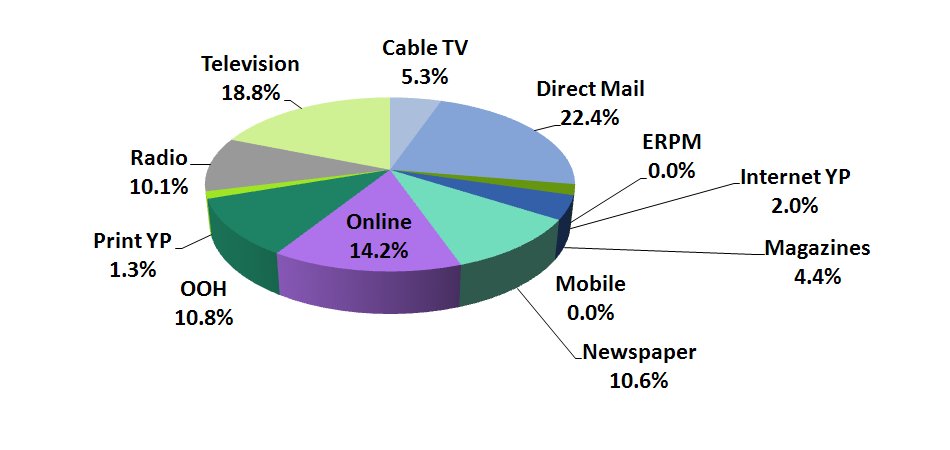
Television dominated the Government/Political/Religion (“GPR”) vertical in 2012, according to BIA/Kelsey’s Media Ad View Plus. In 2012, television’s $3.1 billion of advertising from GPR represented nearly 3/4 of total advertising for this vertical.
2012 Government/Political/Religion Ad Spending by Media

The $3.1 billion of GPR advertising represented 15% of the television media’s total ad spend in 2012, with the vast majority of it coming in the Fall (September to November), based on information from the Television Bureau of Advertising (TVB). TVB has studied the spending patterns in the political category for the past several election cycles. The vast majority of political spending occurs in the Fall (September to November), with the exception of primaries, which provide some advertising revenue from January to September, at least in markets within battleground states. “Clearly local TV’s role as the campaign media workhorse has not changed” states the TVB about the 2012 election season.
GPR advertising is cyclical, peaking during big national and local elections, which occur during even years. The more hotly contested the elections are, the better for local television stations. In 2017, an odd year with no major political elections, the GPR advertising landscape is vastly different, with only 19% of GPR advertising revenue going to television. More GPR advertising revenue will be going to direct mail than television in 2017, according to Media Ad View Plus. In odd years, such as 2017, GPR is dominated by smaller local elections, which rely more on direct mail to get their message to voters in their districts rather than advertise to entire television markets.
2017 Government/Political/Religion Ad Spending by Media

The bounty that can be GPR revenue during the even years is not equal across the 210 Nielsen television markets. Markets located in battleground states will see greater GPR advertising spend than markets in states that are heavily red or blue. States such as Ohio, Virginia and Florida have become predictable battlegrounds states. These so called “purple” states see boosts during even years, with the Presidential, Senate and House races.
More information on BIA/Kelsey’s Media Ad View Plus is available here.
This Post Has One Comment
Leave a Reply
You must be logged in to post a comment.

Having read this I thought it was very enlightening.
I appreciate you spending some time and effort to put this information together.
I once again find myself spending way too much time both reading and commenting.
But so what, it was still worthwhile!
My website … seo top 10 – Julius,